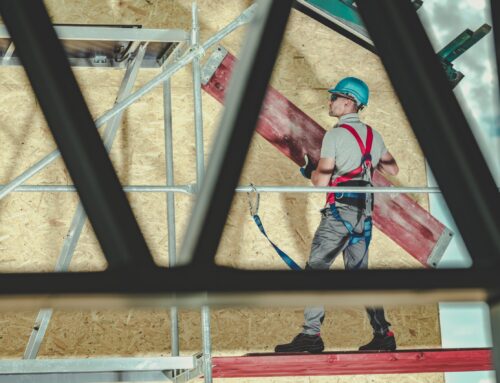Driving in winter weather conditions poses certain challenges, including slippery roads, reduced visibility, etc. Here are 10 safety tips to give your workers—especially but not just those who drive as part of their duties.
1. Clear Off the Snow
Brush the snow from all of the windows, hood, roof, side mirrors, headlights and tail lights—not just a small area on the front windshield and then start driving.
2. Check Road Conditions
Before heading out, check to see what the current road conditions are and what type of weather you should expect. It’s also a good idea to make sure someone is aware of your travel plans, especially during inclement weather.
3. Stay Off the Roads, If Necessary
Put off your drive when the weather’s really bad. Weigh the risks. Losing some time is better than losing your life or vehicle.
4. Give Yourself Extra Time & Distance to Brake
Understand that stopping in slippery conditions takes more time and distance and allow for it in both speed and distance between the vehicle in front of you. t. (Here’s a video on braking in winter weather conditions.)
5. Know the Limits of Your Vehicle
Understand what your vehicle can and can’t do in the snow. Above all, don’t believe the TV commercials about four-wheel and all-wheel drive vehicles being safe to drive in the snow and ice.
6. Check Your Tires
When it comes to winter driving, good winter tires are one of the most important investments a motorist can make. The rubber used to make snow tires is specially designed for cold conditions. It’s softer, which allows the tires to maintain better contact with the road. And the treads are designed to grip the road better by displacing slush and snow. Note: all-season tires are not the same as winter or snow tires.
7. Buckle Up
A seat-belt will help keep you in your seat if your vehicle does slip on the roadways and it’ll help protect you at the moment of impact.
8. Don’t Use Cell Phone While Driving
Talking on a cell phone while driving is dangerous in any weather conditions. But do take your cell phone with you in case you need to call for help. Just stay off the phone while you’re negotiating the snow and ice.
9. Pack a Winter Safety Kit
You should have a winter emergency kit in your vehicle that includes a cell phone, flashlight and batteries, emergency food, bottled water, candles, blankets, booster cables, sand or kitty litter for traction, tow cables and road maps.
10. Maintain Your Vehicle
Ensure your windshield wiper fluid is a winter variety that won’t freeze and keep it topped off. Make sure your car is running properly. Regular oil changes and servicing are important for both vehicle maintenance and safety. For example, have a mechanic check on the battery’s condition. If it’s old, replace it. And finally, keep the gas tank full.






